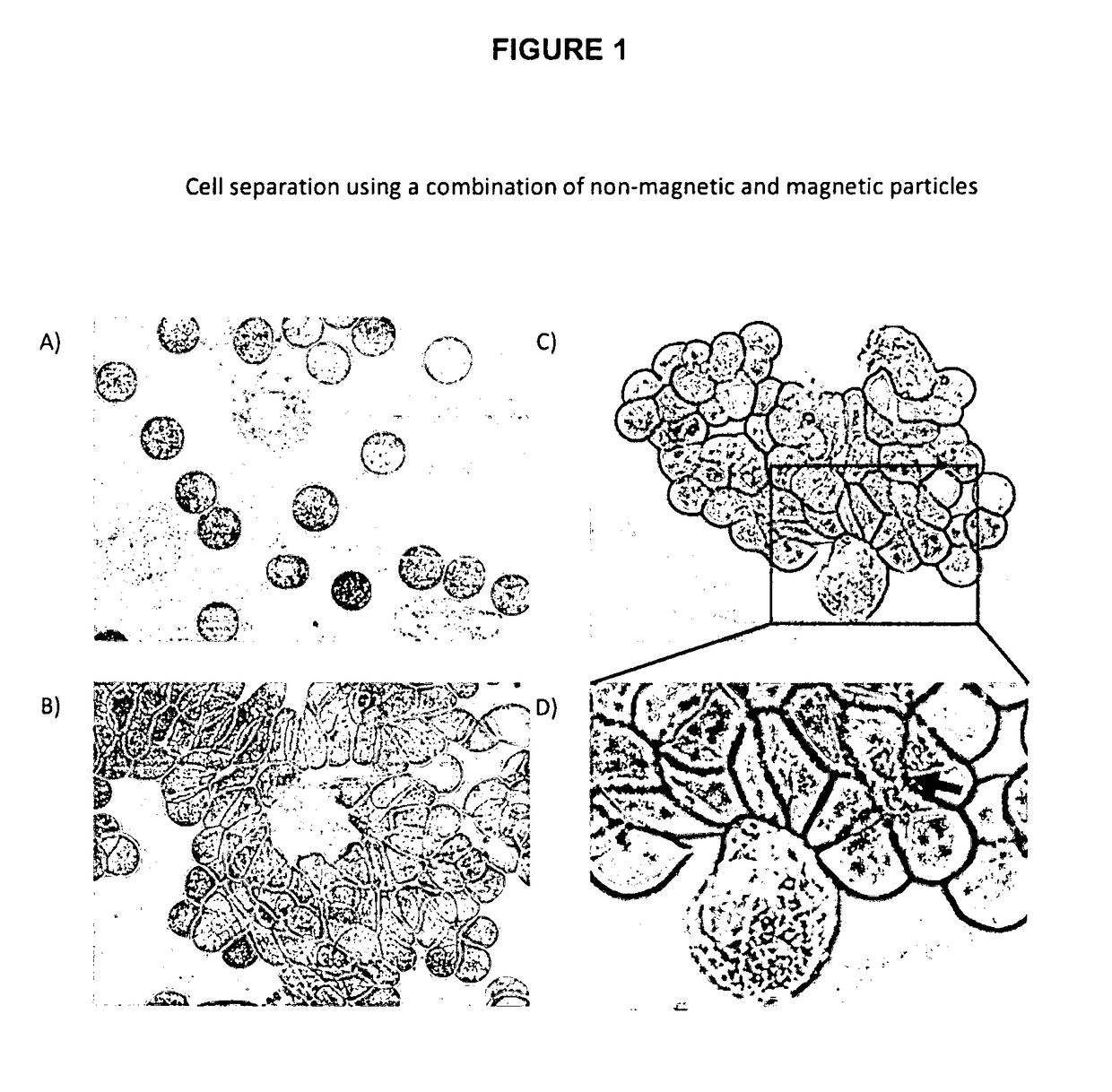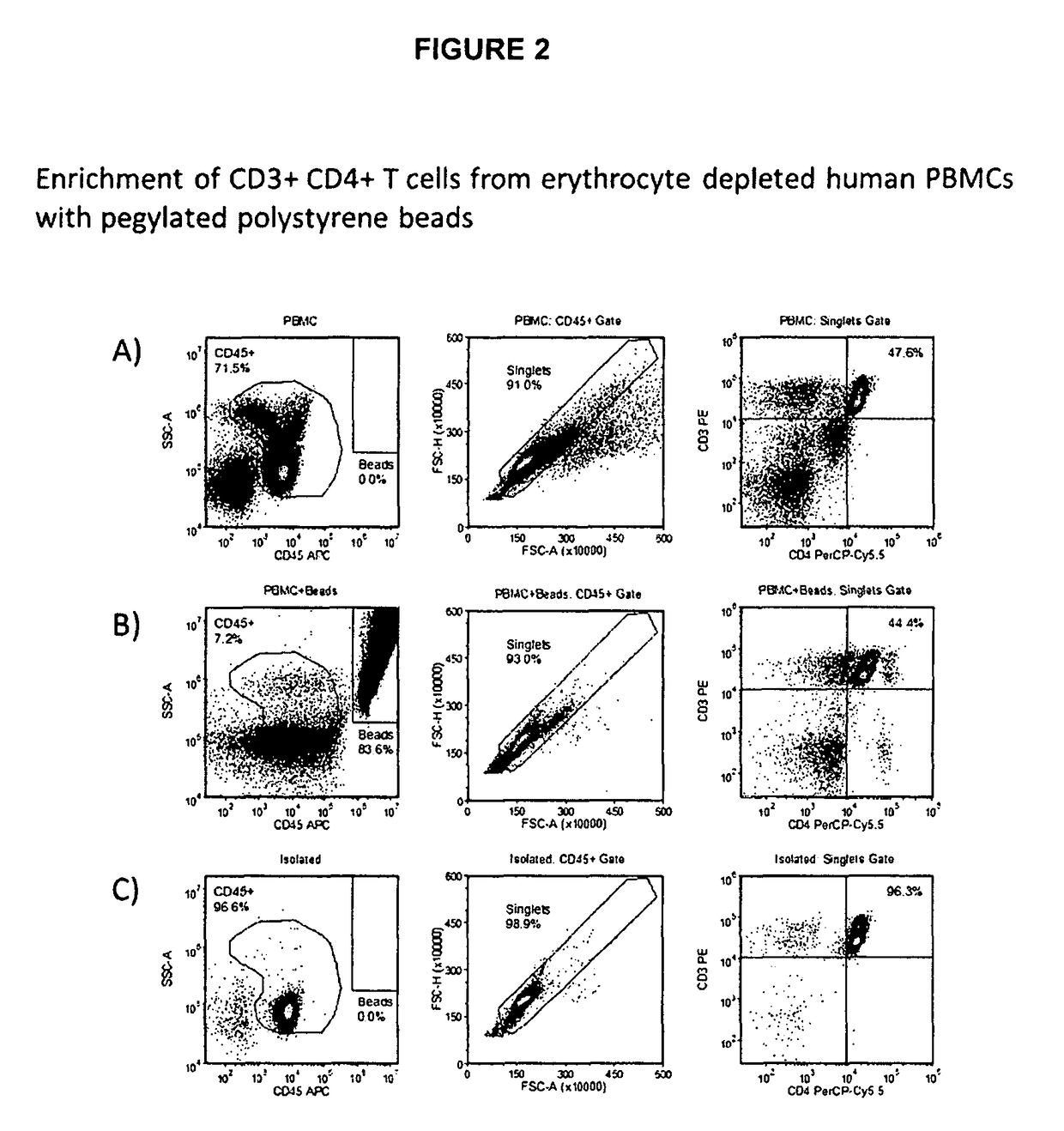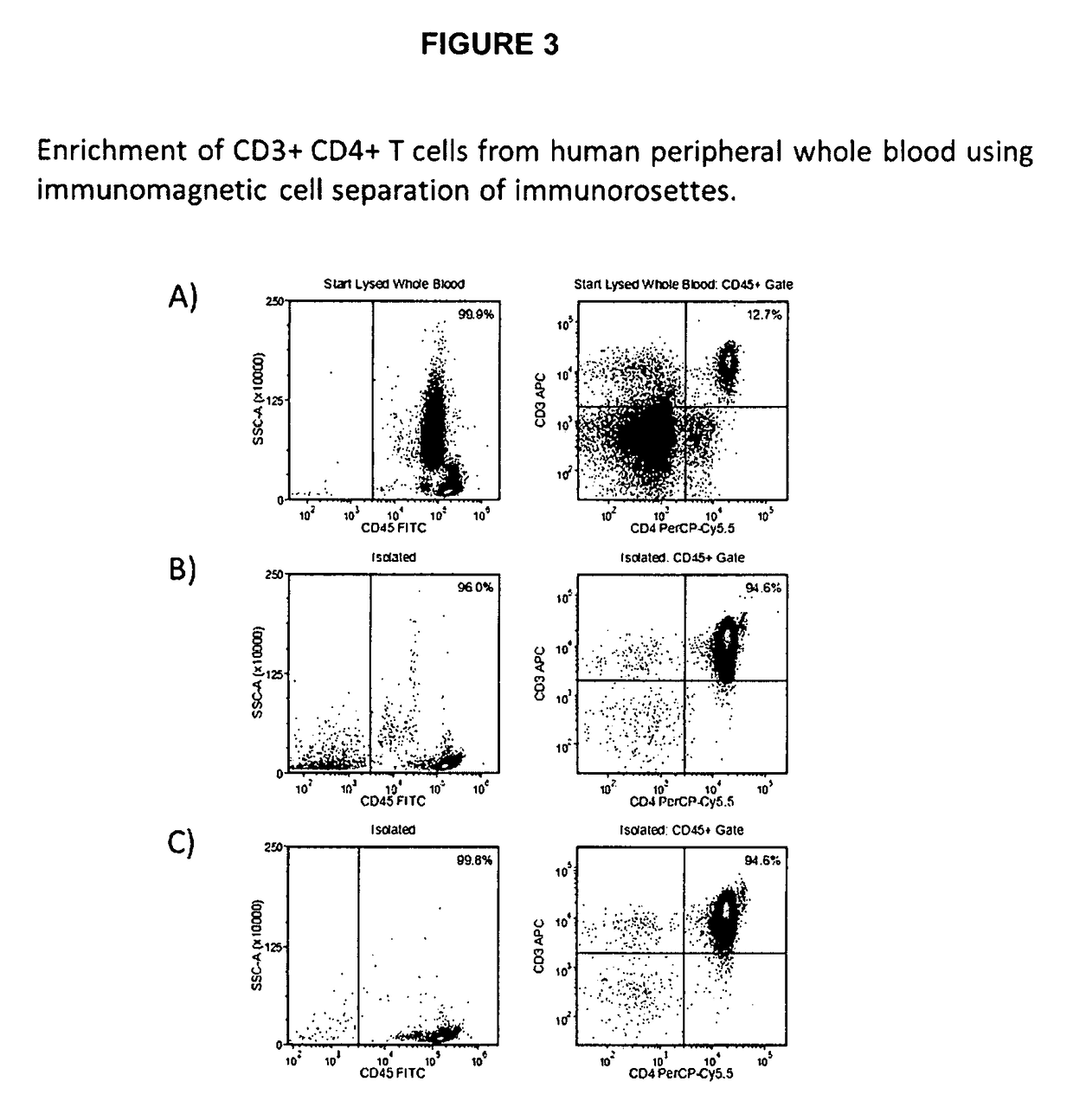Method for separating cells using immunorosettes and magnetic particles
a technology of applied in the field of separating cells using immunorosette and magnetic particle, can solve the problems of residual erythrocyte contamination in the final enriched cell sample, inability to obtain purified mononuclear cells from stored blood or samples with altered cell density, and inability to use soley immunomagnetic cell separation methods, etc., to achieve the effect of efficient separation of target cells, reducing sample handling, and improving erythrocyte depletion
- Summary
- Abstract
- Description
- Claims
- Application Information
AI Technical Summary
Benefits of technology
Problems solved by technology
Method used
Image
Examples
example 1
Preparation of Tetrameric Antibody Complexes
[0088]In order to prepare a tetrameric antibody complex for use in the method of the present disclosure, the following protocol may be used: (a) take 1 mg of antibody specific for cells to be rosetted (e.g. anti-CD8, CD16, CD19, CD36, CD56, CD66b, etc.); (b) add 3 mg anti-glycophorin A antibody (against erythrocytes); mix well (c) then add 4.0 mg of P9 antibody or 2.72 mg of the P9 F(ab′)2 antibody fragment. Incubate overnight at 37° C. The P9 antibody binds the Fc portion of the antibodies added in steps (a) and (b) resulting in a tetrameric antibody complex. For the second antibody composition, the following protocol may be used: (a) take 1 mg of antibody specific to erythrocytes (anti-glycophorin A); (b) add 1 mg of P9 antibody or 0.68 mg of P9 F(ab′)2 antibody fragment. Alternatively, (a) take 1 mg of antibody specific to erythrocytes (anti glycophorin A); (h) add 3 mg of anti-dextran antibody; mix well (c) then add 4.0 mg of P9 antibo...
example 2
Preparation of Particles with Bound Tetrameric Antibody Complexes or Antibodies Against the Secondary Target.
[0093]In order to prepare a particle with bound tetrameric antibody complexes for use in the method of the present disclosure, the following protocol may be used: (a) take 200 ug of anti-glycophorin A antibody bound in a tetrameric antibody complex with 200 ug of P9 antibody; (b) add 80 mg of carboxydextran magnetic particles; and (c) incubate overnight at 15-37° C. The composition is then diluted 1 / 20 into the sample so the final concentration of anti-glycophorin A antibody is between 1-10 ug / mL.
[0094]In another embodiment, physical adsorption or chemical crosslinking of anti-glycophorin A to magnetic particles is performed using conventional techniques that are readily apparent to those of skill in the art. A non-limiting example illustrative of the present disclosure would be the EDC-NHS crosslinking of anti-glycophorin A antibody to a carboxydextran magnetic particle. The...
example 3
Method of Immunomagnetic Cell Separation of Immunorosettes from Human Peripheral Whole Blood Using Mono-Specific Tetrameric Antibody Complexes Specific for the Secondary Targets Directly Bound to Magnetic Particles
[0096]A negative selection protocol for immunorosetting cells from human peripheral whole blood using magnetic cell separation is set out below.[0097]1. Add 50 uL of the first antibody composition per mL of human peripheral whole blood.[0098]2. Add 50 uL of the second antibody composition directly bound to magnetic particles per mL of human peripheral whole blood.[0099]3. Incubate 5 minutes at room temperature.[0100]4. Dilute sample with an equal volume of phosphate buffered saline (PBS) and mix gently.[0101]5. Place the tube containing the sample into a magnet.[0102]6. Incubate 5 minutes at room temperature.[0103]7. Remove the enriched cells from the sample while the sample tube is retained within the magnet.[0104]8. Add an equivalent volume of the second antibody composi...
PUM
| Property | Measurement | Unit |
|---|---|---|
| concentration | aaaaa | aaaaa |
| concentration | aaaaa | aaaaa |
| concentration | aaaaa | aaaaa |
Abstract
Description
Claims
Application Information
 Login to View More
Login to View More - R&D
- Intellectual Property
- Life Sciences
- Materials
- Tech Scout
- Unparalleled Data Quality
- Higher Quality Content
- 60% Fewer Hallucinations
Browse by: Latest US Patents, China's latest patents, Technical Efficacy Thesaurus, Application Domain, Technology Topic, Popular Technical Reports.
© 2025 PatSnap. All rights reserved.Legal|Privacy policy|Modern Slavery Act Transparency Statement|Sitemap|About US| Contact US: help@patsnap.com



